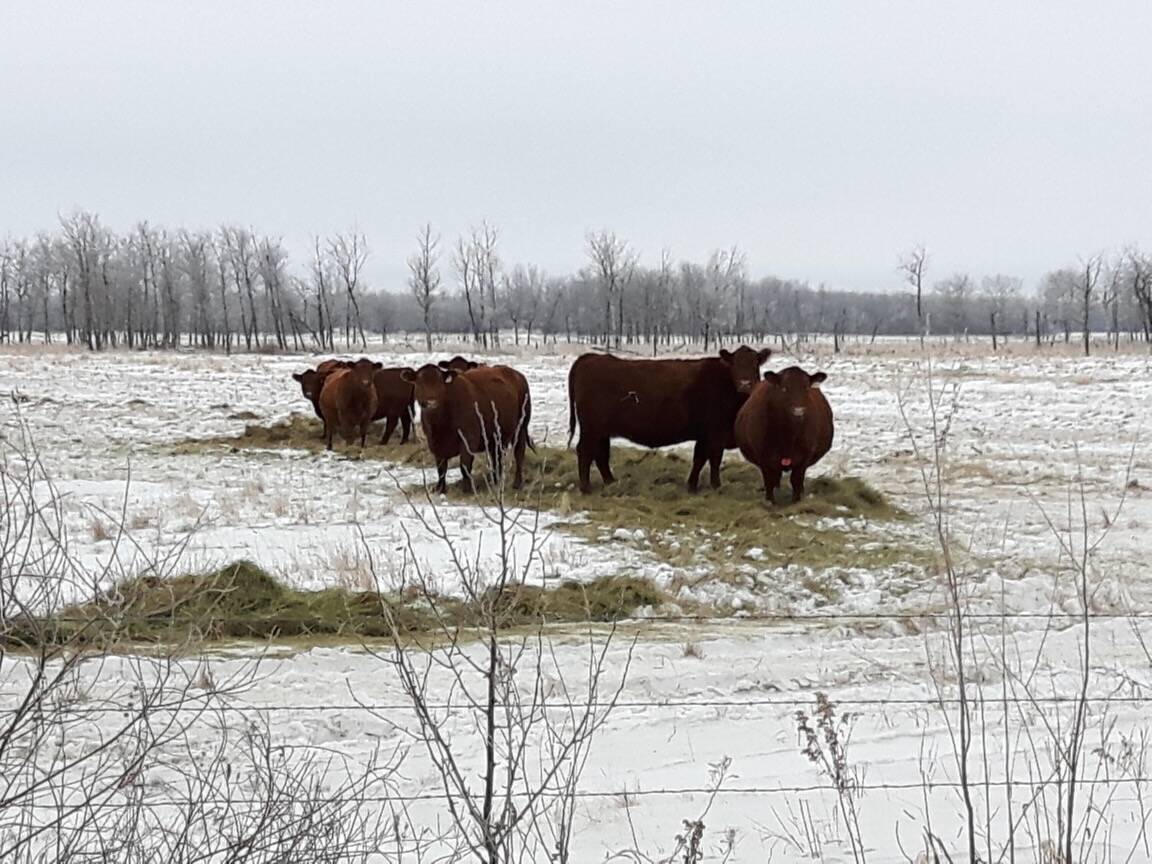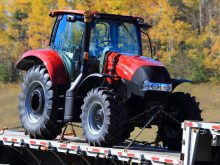When I get digging through old photos … look out! I often find something from my days on the farm in the mid-20th century that in today’s era of technology probably has closer ties to the 1700s.
This fuzzy photo of a kid riding a milk cow is the first livestock tracking system my dad had on the farm. The rider would be with the cow all day and report back on how long and what she ate and how long she chewed her cud and compare that data to milk production records. A great management tool! Or not.
Okay, so I sort of made that last part up. It never happened. That’s just a photo of me perhaps in the late 1950s riding a smaller, quieter Holstein I called Blackie. It is the closest I ever got to the rodeo circuit. Me and Blackie never went anywhere except around the yard and one of the few things I remember from those days was the ridge of her bony backbone was hard on my butt.
Read Also

Prevent nitrate poisoning in overwintering beef cows
High-nitrate feeds can be deadly for overwintering beef cows. They can be used, but only if they’re processed and diluted in a lower nitrate ration.
A few things come to mind from that photo. First is, I should have hired a better photographer. That photo was probably taken by my mother with an old Kodak box camera. One roll of film with 12 frames that stored images of everything from Christmas to Easter, to a picnic by the St. Lawrence River, to a group shot of cousins who visited from New York State — all on that one roll, a year’s worth of memories. Taking one photo of each event was lots. (Compare that with the 1,100 photos I have on my cellphone today, and I’m not even close to being a selfie fanatic. Time and technology change.)
The other point that comes to mind is just how simple those farming days were in the late 1950s and early 1960s. Fast-forward to 2022 and I dare you to keep up with technology.
Earlier this month, I spent a few hours along with other Alberta farm writers touring some of the new features, the new technology at Olds College in south-central Alberta. A lot of this technology is stuff you read about or you may see in a booth at a farm show, but a few hours at the college and here it all is. So many aspects of new technology, in focus, out of the box and all being applied to so many facets of crop and livestock production on the college’s 3,600-acre Smart Farm.

A lineup of autonomous seeding, fertilizing and spraying equipment, precision farming technology, regenerative agriculture practices, sensors to sense things you didn’t know you could sense, a fleet of drones that could outmanoeuver the Star Wars Imperial Army, floating islands that can keep dugouts and ponds free of algae, $12,000 on-farm weather stations that can make it rain (I made the rain part up too), a real livestock tracking and traceability system — and you may never need to buy another roll of fencing wire again. And that’s just some of the stuff I remember.
The college is trying it all. They’re not saying it all will have value or application in day-to-day farming operations, but that’s the point. They’ve got more than 95 applied research projects on the go having a look at what works and what doesn’t. And it is all woven into teaching and learning experiences for several hundred students learning about crop and livestock production and management, and using the new technology to produce grains and protein.
The students aren’t just sitting back watching. They are out in the field or the barn learning how to use and evaluate this technology on a daily basis. It makes you wonder who’s running the asylum? Doesn’t matter — so far as it is working pretty good.
And this new era of farming technology isn’t just happening at Olds College. Lakeland College in Vermilion and Lethbridge College in southern Alberta are also dialed in and applying new technology in their programs too. I need to get there and have a look.
I also learned that concerns Olds College might be wasting its time with an on-campus microbrewery program appear to be unfounded. Sounds like quite a few people are interested in seeing what happens when you put water and Alberta-grown barley and hops together in the same kettle. Apparently great things happen, and in a wide range of flavours.
















